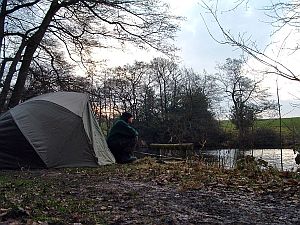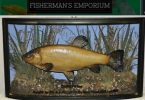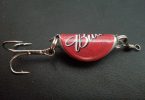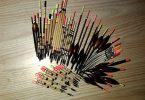There have been huge advancements in the last few decades when it comes to outdoor clothing; new fabrics, new products and new technologies. The science behind waterproof breathable fabrics continues to progress with every year that passes, and as a result, specialist clothing becomes evermore durable and weather resistant.
Most outdoor clothing is designed to be worn as part of a layering system. In essence there are three layers in a system; the base layer, the mid layer and the outer layer. The system is simple in itself, but the problem sometimes comes with how you use and incorporate these layers at different times of year to fit in with the conditions you are faced with on the bank. In this three part series, we will take a look at how each part of the layering system works, explaining which garments make up each part of the system, how to get the best out of these garments, and how to incorporate and adapt them to fit in with changing conditions.
The first and perhaps most important part of the layering system is the base layer. The base layer is worn directly against the skin. The purpose of the base layer is to trap a very thin insulating layer of warm air against the skin, thus retaining body heat. However, to stop sweating, the base layer also needs to be able to move sweat vapour out through the layer as part of a ‘breathable’ system; a process referred to as ‘wicking’.
In the colder months, the base layer will often consist of thermal underwear, i.e. thermal long johns and a thermal short or long sleeved top. The mid layer would then be the lined trousers and fleece tops we wear over them. However, as we move into the warmer months, we might do away with the thermal base layer altogether, and just wear lightweight trousers on their own – so it’s important to remember that you don’t always have to wear three parts (base/mid/outer) at the same time to make the system work – the whole point of the system is that you add, or remove, layers to match the conditions.
What you also have to remember is that garments can be designed for specific levels of activity. Passive garments are designed for low level activity, so are great for session angling where you will often be sitting motionless for long periods. These garments are designed to retain heat and are usually heavier in weight. At the other end of the scale, active garments are designed for high level movement and quickly move heat through the layer to prevent sweating. Therefore, they are more lightweight in design than passive garments and are suited to people constantly on the move or with a high level of activity.
 If you get your layers right, quite simply, you will never be cold. It never fails to amaze me how few people actually dress correctly for session fishing. As soon as the cold weather comes, they complain of being cold, and once cold, it’s extremely hard to get warm again, and even if you do, if you are not dressed correctly, you’ll immediately lose the heat you’ve just worked hard to build up! The benefits don’t just apply to the physical aspect of keeping warm – the mental benefits are there too. A warm body allows the mind to work at an optimum level. Once you get cold your brain switches off and won’t function in the same way, so in short, you won’t have your eye on the ball and could miss the opportunities to put a few fish on the bank. And let’s face it, winter fishing can be hard enough as it is!
If you get your layers right, quite simply, you will never be cold. It never fails to amaze me how few people actually dress correctly for session fishing. As soon as the cold weather comes, they complain of being cold, and once cold, it’s extremely hard to get warm again, and even if you do, if you are not dressed correctly, you’ll immediately lose the heat you’ve just worked hard to build up! The benefits don’t just apply to the physical aspect of keeping warm – the mental benefits are there too. A warm body allows the mind to work at an optimum level. Once you get cold your brain switches off and won’t function in the same way, so in short, you won’t have your eye on the ball and could miss the opportunities to put a few fish on the bank. And let’s face it, winter fishing can be hard enough as it is!
The key to all of this is the base layer, and it’s true to say that one good base layer is worth three good outer layers! Again, I see winter anglers piling jacket on top of jacket in a bid to keep warm. By the time they are done they look like the Michelin Man and can barely walk, let alone fish… and still they say they are cold. It’s little wonder; as they have no base layer, the warm air just dissipates and no matter how many layers you put on, if they are not the correct layers, they will do very little.
So, to get off on the right foot you need a good base layer, and in cold weather terms we’re talking thermal underwear, thermal long johns, or thermal vests – they are all pretty much the same thing. Prices will vary considerably depending on what they are made of, and the purpose for which they have been designed. Much of the top end stuff is more suited to specialist walking and climbing, and as angling is more at the passive end of the scale, you don’t really need to go mad. However, it’s worth pointing out some of the differences in order that you can see which type would suit you best.
First up we have Merino base layers. Merino is a type of wool and the name actually refers to the sheep from which it’s taken. In sheep terms, the Merino is the Rolls Royce of sheep, and provides some of the finest (in terms of thickness) and softest wool available. It terms of base layer garments, Merino fibres are so delicate they don’t make you itch or scratch like other wool garments can and it also has excellent properties for eliminating body odours. Merino is often the more expensive option but this is mainly down to its performance; it has an excellent warmth to weigh ratio and works extremely well to regulate body temperature.
The other option is a synthetic (man made) base layer, usually referring to those made from polyester. The benefits of synthetic base layers are that they are much cheaper and often work out less than half the price of Merino. In an active situation they won’t perform to the same level as Merino, but as most of our angling will be in a passive situation, they will usually fit the bill in terms of use and price.
One thing I do hear from those who don’t like to wear a thermal base layer is that they always end up sweating like a pig whilst they get all their kit to the swim and can’t then get warm again. The simple reason for this is that they’re not layering correctly with breathable garments on top of their base layer. The real killer in any layering system is cotton. Put simply, cotton acts like a sponge. It won’t breathe and rather than wicking away sweat through and out of the layer, it will absorb it all, and in doing so, will draw valuable heat from the body – so, if you wear a cotton T shirt over your thermal top you are asking for trouble!
All you need to do is ensure the layer you wear over your base layer is breathable, and not made from cotton. You can get a whole host of base layer tops from outdoor specialists designed to be worn on their own for walkers and outdoor enthusiasts. These can work equally well for angling in the colder months when used in combination with a thermal base layer. What’s more, it’s regulating body heat that’s key.
I wear my thermal base layer leggings pretty much all year round. On the walk to my swim in the colder months I know I’m going to build up heat quickly, so I might take off my fleece top, or remove my hat or gloves temporarily to ensure I don’t build up too much heat, then once I’m at the swim and all the active work is over, as the heat dissipates, I can put my jacket or hat back on.
It’s also important to remember that socks are an integral part of the base layer, and the key here again is to make sure you don’t use cotton. Use a breathable material for your socks, along with your footwear, to ensure you aren’t sitting with damp feet for the remainder of your session! There are all sorts of socks out there ideally suited to angling, which can be worn on their own, or in combination with a thicker pair for winter use. Click here to view some of the ones on offer.
One point often overlooked is that no garment of clothing can produce heat – only your body can produce heat. The purpose of a base layer is to retain and manage as much of that heat as possible, and by doing so, you don’t need as many additional layers on top, and taking it to the extremes, can begin to do away with many of the fishing ‘extras’ we’re led to believe we have to have to make winter fishing more bearable.
I hate the idea of being cocooned in a bivvy with zipped up doors and nothing to see – that’s not why I go fishing – I like to be at one with my surroundings whatever conditions I’m faced with. I fish overnighters with no front or doors on my bivvy, no winter skins and no groundsheet – right throughout the year; rain, snow shine, and yet this does not mean I have to suffer with hypothermia in the colder months – just the opposite. By dressing correctly from base layer upwards, I’m able to effectively control my body temperature from the moment I leave the house to the moment I return.
Just last night I did a quick overnighter where it was only two degrees when I left the house at around 8pm, and it was only two degrees when I got back in the car at 8am the following morning – I have no idea how cold in went in-between as I was tucked up snug in the sack, wearing breathable base and mid layers to maintain and mange my body heat right through the night. All I can tell you is that is was pretty frosty when I woke!
As the winter weather gets left behind, base layers then consist of more durable garments for top or bottom that can be worn next to the skin. There are loads to choose from as there are tons available aimed at the outdoor enthusiast, but for me, they can also be construed as mid layers, as during winter they would actually be worn over the thermal base layer, so I’ll cover more about these in the next piece.
Julian Grattidge
Northwestcarp.co.uk
October 2011
Looking to buy base layer items? Please CLICK HERE.








